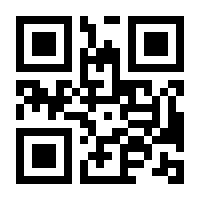
×
![Buchcover ISBN 9780387962177]()
Mathematics Form and Function
von Saunders MacLaneInhaltsverzeichnis
- I Origins of Formal Structure.
- 1. The Natural Numbers.
- 2. Infinite Sets.
- 3. Permutations.
- 4. Time and Order.
- 5. Space and Motion.
- 6. Symmetry.
- 7. Transformation Groups.
- 8. Groups.
- 9. Boolean Algebra.
- 10. Calculus, Continuity, and Topology.
- 11. Human Activity and Ideas.
- 12. Mathematical Activities.
- 13. Axiomatic Structure.
- II From Whole Numbers to Rational Numbers.
- 1. Properties of Natural Numbers.
- 2. The Peano Postulates.
- 3. Natural Numbers Described by Recursion.
- 4. Number Theory.
- 5. Integers.
- 6. Rational Numbers.
- 7. Congruence.
- 8. Cardinal Numbers.
- 9. Ordinal Numbers.
- 10. What Are Numbers?.
- III Geometry.
- 1. Spatial Activities.
- 2. Proofs without Figures.
- 3. The Parallel Axiom.
- 4. Hyperbolic Geometry.
- 5. Elliptic Geometry.
- 6. Geometric Magnitude.
- 7. Geometry by Motion.
- 8. Orientation.
- 9. Groups in Geometry.
- 10. Geometry by Groups.
- 11. Solid Geometry.
- 12. Is Geometry a Science?.
- IV Real Numbers.
- 1. Measures of Magnitude.
- 2. Magnitude as a Geometric Measure.
- 3. Manipulations of Magnitudes.
- 4. Comparison of Magnitudes.
- 5. Axioms for the Reals.
- 6. Arithmetic Construction of the Reals.
- 7. Vector Geometry.
- 8. Analytic Geometry.
- 9. Trigonometry.
- 10. Complex Numbers.
- 11. Stereographic Projection and Infinity.
- 12. Are Imaginary Numbers Real?.
- 13. Abstract Algebra Revealed.
- 14. The Quaternions—and Beyond.
- 15. Summary.
- V Functions, Transformations, and Groups.
- 1. Types of Functions.
- 2. Maps.
- 3. What Is a Function?.
- 4. Functions as Sets of Pairs.
- 5. Transformation Groups.
- 6. Groups.
- 7. Galois Theory.
- 8. Constructions of Groups.
- 9. Simple Groups.
- 10. Summary: Ideas of Image and Composition.
- VI Concepts of Calculus.
- 1. Origins.
- 2. Integration.
- 3. Derivatives.
- 4. The Fundamental Theorem of the Integral Calculus.
- 5. Kepler’s Laws and Newton’s Laws.
- 6. Differential Equations.
- 7. Foundations of Calculus.
- 8. Approximations and Taylor’s Series.
- 9. Partial Derivatives.
- 10. Differential Forms.
- 11. Calculus Becomes Analysis.
- 12. Interconnections of the Concepts.
- VII Linear Algebra.
- 1. Sources of Linearity.
- 2. Transformations versus Matrices.
- 3. Eigenvalues.
- 4. Dual Spaces.
- 5. Inner Product Spaces.
- 6. Orthogonal Matrices.
- 7. Adjoints.
- 8. The Principal Axis Theorem.
- 9. Bilinearity and Tensor Products.
- 10. Collapse by Quotients.
- 11. Exterior Algebra and Differential Forms.
- 12. Similarity and Sums.
- 13. Summary.
- VIII Forms of Space.
- 1. Curvature.
- 2. Gaussian Curvature for Surfaces.
- 3. Arc Length and Intrinsic Geometry.
- 4. Many-Valued Functions and Riemann Surfaces.
- 5. Examples of Manifolds.
- 6. Intrinsic Surfaces and Topological Spaces.
- 7. Manifolds.
- 8. Smooth Manifolds.
- 9. Paths and Quantities.
- 10. Riemann Metrics.
- 11. Sheaves.
- 12. What Is Geometry?.
- IX Mechanics.
- 1. Kepler’s Laws.
- 2. Momentum, Work, and Energy.
- 3. Lagrange’s Equations.
- 4. Velocities and Tangent Bundles.
- 5. Mechanics in Mathematics.
- 6. Hamilton’s Principle.
- 7. Hamilton’s Equations.
- 8. Tricks versus Ideas.
- 9. The Principal Function.
- 10. The Hamilton—Jacobi Equation.
- 11. The Spinning Top.
- 12. The Form of Mechanics.
- 13. Quantum Mechanics.
- X Complex Analysis and Topology.
- 1. Functions of a Complex Variable.
- 2. Pathological Functions.
- 3. Complex Derivatives.
- 4. Complex Integration.
- 5. Paths in the Plane.
- 6. The Cauchy Theorem.
- 7. Uniform Convergence.
- 8. Power Series.
- 9. The Cauchy Integral Formula.
- 10. Singularities.
- 11. Riemann Surfaces.
- 12. Germs and Sheaves.
- 13. Analysis, Geometry, and Topology.
- XI Sets, Logic, and Categories.
- 1. The Hierarchy of Sets.
- 2. Axiomatic Set Theory.
- 3. The Propositional Calculus.
- 4. First Order Language.
- 5. The Predicate Calculus.
- 6. Precision and Understanding.
- 7. Gödel Incompleteness Theorems.
- 8. Independence Results.
- 9. Categories and Functions.
- 10. Natural Transformations.
- 11. Universals.
- 12. Axioms on Functions.
- 13. Intuitionistic Logic.
- 14. Independence by Means of Sheaves.
- 15. Foundation or Organization?.
- XII The Mathematical Network.
- 1. The Formal.
- 2. Ideas.
- 3. The Network.
- 4. Subjects, Specialties, and Subdivisions.
- 5. Problems.
- 6. Understanding Mathematics.
- 7. Generalization and Abstraction.
- 8. Novelty.
- 9. Is Mathematics True?.
- 10. Platonism.
- 11. Preferred Directions for Research.
- 12. Summary.
- List of Symbols.




